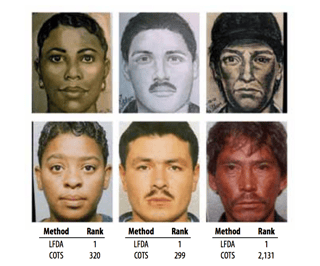When it comes to machine learning (ML) and artificial intelligence (AI) opportunity, many people immediately think of sleek Silicon Valley companies inventing the latest gadgets that will, according to some, change our lives. But in fact, it’s the public sector and nonprofit organizations that are increasingly harnessing ML and AI to bring real change.

Efficiency to Gain
One of the reasons advances in data science in the public sector and in nonprofits can be so meaningful is because in these areas, there is lots to be gained. They’ve been around doing their thing for - well, ever. So while Silicon Valley giants are trying to make relatively new technologies even better, faster, and smarter, in the public and nonprofit domains, even small changes can mean massive improvements as old, manual systems become more modern.

Just one example of machine learning and automation in the public sector is matching forensic sketches to mugshots (source).
For example, the Washington County Sheriff’s Department now uses machine learning to cross-reference persons of interest with mugshots already in their system. Allegheny County, which encompasses Pittsburgh, uses machine learning to help child welfare workers better identify children in high-risk homes. The National Institute of Justice launched a real-time crime forecasting challenge to try to predict crime before it happens (which, humble brag, a team from Dataiku won, and you can see the details of how they did it here).
And in late January of 2018, several news outlets covered the massive amounts of data available on refugees in camps that could be used to massively improve their lives. Unfortunately, nothing has come of this data opportunity yet largely due to financial and technical challenges, but we can be optimistic that something great will come of it in the near future by using predictive analytics and machine learning.
Doing More with Less
The refugee data example is a perfect one to illustrate how organizations in the public sector and nonprofits face increasing budget cuts and restriction of resources. But in many ways, this has started to bring about the shift toward ML and AI. Faced with having to do more with less, these organizations are beginning to spin up data teams and leverage cutting-edge tools to more quickly and easily bring about change.

With fewer resources but steady (or rising) quality expectations, something has to change to get results (enter: ML and AI).
Ultimately, as demand for their services are only growing, organizations in the public sector and nonprofits are a perfect example of how ML and AI can transform previously manual (and error-prone work), freeing up staff to work on more innovative tasks to even better serve the public in the figure.
Case Study
One specific example of the harnessing of predictive technology to do more with less is Technical Safety BC, an independent, self-funded organization mandated to oversee the safe installation and operation of technical systems and equipment across British Columbia (BC).
By implementing a predictive model that flags emerging risks across technical systems and automatically shifts resource allocations accordingly to automatically target the highest-risk sites for inspection, Technical Safety BC is able to have an even higher impact on public safety. In fact, the model they created using Dataiku is 85 percent better at identifying hazards than previous methods.

Technical Safety BC used Dataiku to develop a predictive model 85 percent better at hazard identification than previous methods.
To learn more about Technical Safety BC’s story, read the full case study.




